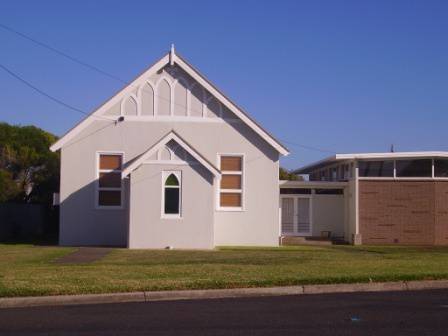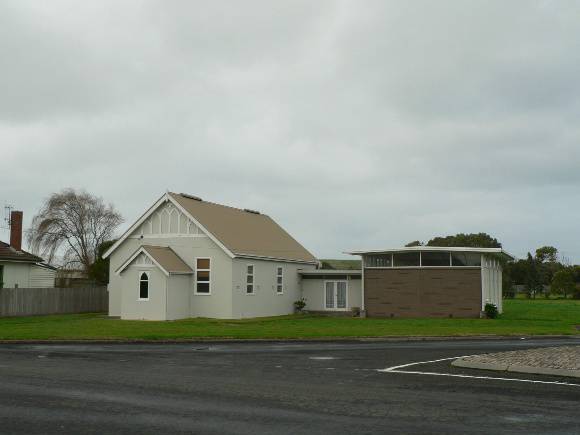| Back to search results » | Back to search page » |
|
St Andrews Church and Hall (former)
Other NameChurch and Hall Location14 Drummond Street DENNINGTON, WARRNAMBOOL CITY LevelStage 2 study complete |
|
Statement of Significance
What is Significant? The former St. Andrews Anglican Church and Hall, Drummond Street, Dennington is located on a large parcel of land comprising allotments 7, 12, 13 and 14 in the township of Dennington. The church and hall are located on the corner of Esplanade and Drummond Street, and are surrounded by a grassed area of land to the south and west. The simple church was erected in 1915 with funds raised by the local parishioners, and is not likely to have an architect. The hall was erected in 1964, and shows a sophistication of design, it may have been designed by Tag Walters, a prominent local architect. The church is a simple symmetrical building clad in conite with triple hopper windows and decorative half timbered gables with a small porch at the front of the building. The porch imitates the body of the church is form and decoration. The roof is steeply pitched and clad in corrugated iron. The church hall, which is located on the west side of the church uses interesting textured materials such as fluted timber board cladding on the front facade of the new central entry corridor and split face besser blocks with random protrusions on the north face of the hall. Both buildings are in very good condition and retain a high degree of integrity. How is it significant? Why is it significant? The former St Andrews Anglican Church and Hall has social significance as a representation of the collective aspirations of the local congregation to establish a place of worship, which has served as an important community building for varied denominations throughout the 20th century.
The former St Andrews Anglican Church and Hall, Drummond Street, Dennington is of historical and social significance to the City of Warrnambool.
The former St Andrews Anglican Church and Hall, Drummond Street, Dennington is of historical significance as an example of a small satellite church which was developed in response to the quick growth of the Dennington Township in the late nineteenth and early twentieth centuries as a result of the Farnham Dairy Factory (Nestle, now Fonterra) relocating to its current site in 1896. The church and its location represents the strong ties which existed from its inception between the Anglican Church and the milk manufacturing plant on the opposite side of the road.
Group
Religion
Category
Church





